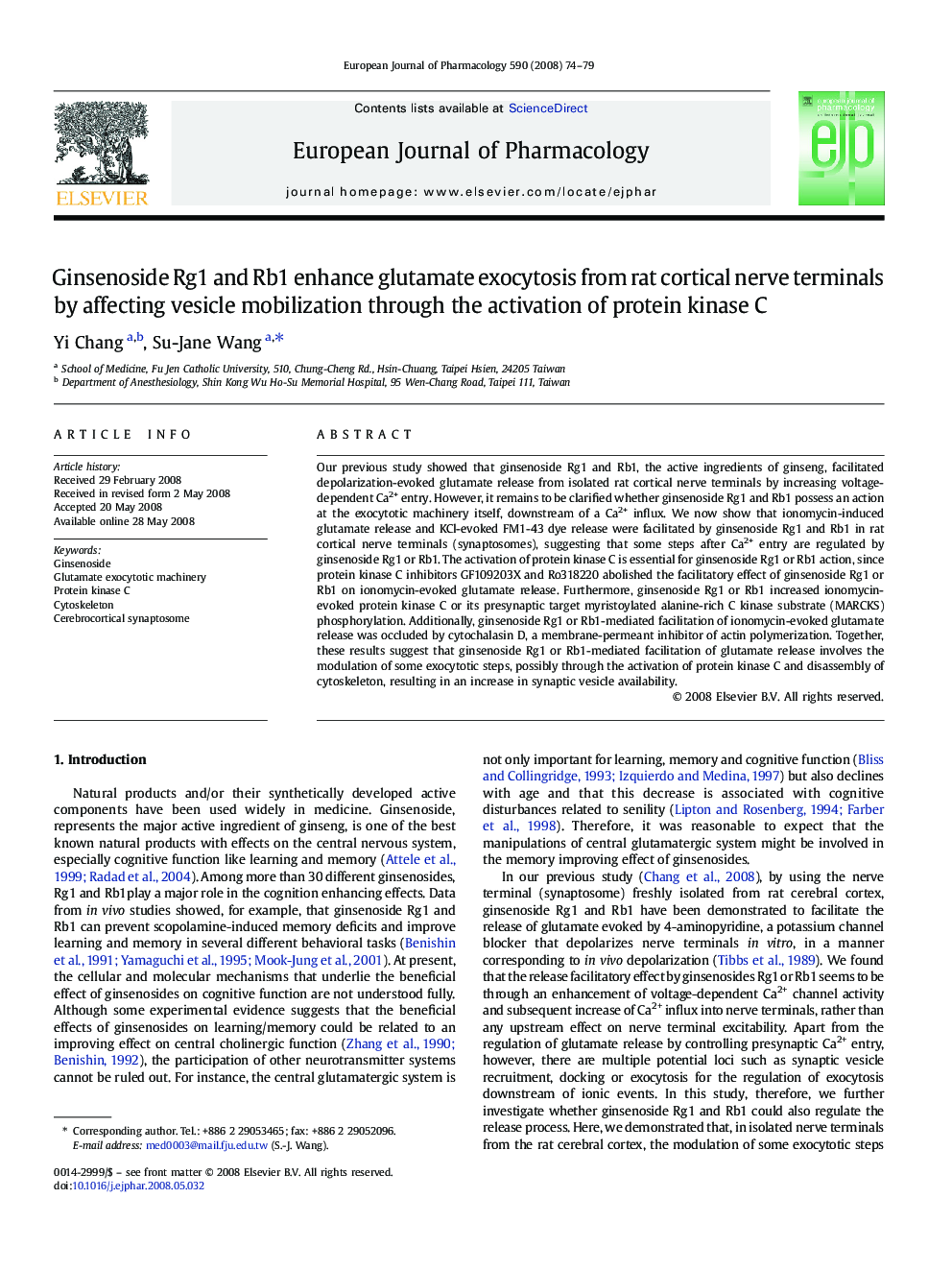| Article ID | Journal | Published Year | Pages | File Type |
|---|---|---|---|---|
| 2534926 | European Journal of Pharmacology | 2008 | 6 Pages |
Our previous study showed that ginsenoside Rg1 and Rb1, the active ingredients of ginseng, facilitated depolarization-evoked glutamate release from isolated rat cortical nerve terminals by increasing voltage-dependent Ca2+ entry. However, it remains to be clarified whether ginsenoside Rg1 and Rb1 possess an action at the exocytotic machinery itself, downstream of a Ca2+ influx. We now show that ionomycin-induced glutamate release and KCl-evoked FM1-43 dye release were facilitated by ginsenoside Rg1 and Rb1 in rat cortical nerve terminals (synaptosomes), suggesting that some steps after Ca2+ entry are regulated by ginsenoside Rg1 or Rb1. The activation of protein kinase C is essential for ginsenoside Rg1 or Rb1 action, since protein kinase C inhibitors GF109203X and Ro318220 abolished the facilitatory effect of ginsenoside Rg1 or Rb1 on ionomycin-evoked glutamate release. Furthermore, ginsenoside Rg1 or Rb1 increased ionomycin-evoked protein kinase C or its presynaptic target myristoylated alanine-rich C kinase substrate (MARCKS) phosphorylation. Additionally, ginsenoside Rg1 or Rb1-mediated facilitation of ionomycin-evoked glutamate release was occluded by cytochalasin D, a membrane-permeant inhibitor of actin polymerization. Together, these results suggest that ginsenoside Rg1 or Rb1-mediated facilitation of glutamate release involves the modulation of some exocytotic steps, possibly through the activation of protein kinase C and disassembly of cytoskeleton, resulting in an increase in synaptic vesicle availability.
